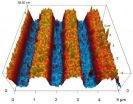(Press-News.org) Bottom Line: A diagnosis of chronic obstructive pulmonary disease (COPD) in older adults was associated with increased risk for mild cognitive impairment (MCI), especially MCI of skills other than memory, and the greatest risk was among patients who had COPD for more than five years.
Author: Balwinder Singh, M.D., M.S., of the Mayo Clinic, Rochester, Minn., and colleagues.
Background: COPD is an irreversible limitation of airflow into the lungs, usually caused by smoking. More than 13.5 million adults 25 years or older in the U.S. have COPD. Previous research has suggested COPD is associated with cognitive impairment.
How the Study Was Conducted: The authors examined the association between COPD and MCI, as well as the duration of MCI, in 1,425 individuals (ages 70 to 89 years) with normal cognition in 2004 from Olmsted County, Minn. At baseline, 171 patients had a COPD diagnosis.
Results: Of the 1,425 patients, 370 developed MCI: 230 had amnestic MCI (A-MCI, which affects memory), 97 had nonamnestic MCI (NA-MCI), 27 had MCI of an unknown type and 16 had progressed from normal cognition to dementia. A diagnosis of COPD increased the risk for NA-MCI by a relative 83 percent during a median of 5.1 years of follow-up. Patients who had COPD for more than five years had the greatest risk for MCI.
Discussion: "Our findings highlight the importance of COPD as a risk factor for MCI."
INFORMATION:
(JAMA Neurol. Published online March 17, 2014. doi:10.1001/.jamaneurol.2014.94. Available pre-embargo to the media at http://media.jamanetwork.com.)
Editor's Note: Authors made conflict of interest disclosures. This study was supported by grants from the National Institutes of Health and other sources. Please see the article for additional information, including other authors, author contributions and affiliations, financial disclosures, funding and support, etc.
Media Advisory: To contact corresponding author Michelle M. Mielke, Ph.D., call Nick Hanson at 507-266-4945 or email hanson.nicholas@mayo.edu.
COPD associated with increased risk for mild cognitive impairment
2014-03-18
ELSE PRESS RELEASES FROM THIS DATE:
Global problem of fisheries bycatch needs global solutions
2014-03-18
SAN DIEGO, Calif. (March 17, 2014)—Whenever fishing vessels harvest fish, other animals can be accidentally caught or entangled in fishing gear as bycatch. Numerous strategies exist to prevent bycatch, but data have been lacking on the global scale of this issue. A new in-depth analysis of global bycatch data provides fisheries and the conservation community with the best information yet to help mitigate the ecological damage of bycatch and helps identify where mitigation measures are most needed.
"When we talk about fisheries' catch, we're talking about what fishers are ...
New hope for early detection of stomach cancer
2014-03-18
University of Adelaide research has provided new hope for the early detection of stomach cancer with the identification of four new biomarkers in the blood of human cancer patients.
Stomach or gastric cancer is the fourth most common cancer in the world and the second leading cause of death due to cancer.
"Stomach cancer is typically without symptoms in the early stages so most cancers are not diagnosed until the later stages, and the survival rates are therefore low," says Associate Professor Peter Hoffmann, project leader and Director of the University's Adelaide ...
Chicken bones tell true story of Pacific migration
2014-03-18
Did the Polynesians beat Columbus to South America? Not according to the tale of migration uncovered by analysis of ancient DNA from chicken bones recovered in archaeological digs across the Pacific.
The ancient DNA has been used to study the origins and dispersal of ancestral Polynesian chickens, reconstructing the early migrations of people and the animals they carried with them.
The study, led by the University of Adelaide's Australian Centre for Ancient DNA (ACAD) and published today in Proceedings of the National Academy of Sciences USA, reveals that previous claims ...
Hubble revisits the Monkey Head Nebula for 24th birthday snap
2014-03-18
To celebrate its 24th year in orbit, the NASA/ESA Hubble Space Telescope has released a beautiful new image of part of NGC 2174, also known as the Monkey Head Nebula. This colourful region is filled with young stars embedded within bright wisps of cosmic gas and dust.
NGC 2174 lies about 6400 light-years away in the constellation of Orion (The Hunter). Hubble previously viewed this part of the sky back in 2001, creating a stunning image released in 2011, and the space telescope has now revisited the region to celebrate its 24th year of operation.
Nebulae are a favourite ...
Crop intensification and organic fertilizers can be a long-term solution to perennial food shortages in Africa
2014-03-18
Farmers in Africa can increase their food production if they avoid over dependence on chemical fertilizers, pesticides and practice agricultural intensification - growing more food on the same amount of land – using natural and resource-conserving approaches such as agroforestry.
According to scientists at the World Agroforestry Centre (ICRAF), crop production in Africa is seriously hampered by the degradation of soil fertility, water and biodiversity resources. Currently, yields for important cereals such as maize have stagnated at 1 tone per hectare. Climate change ...
Researchers change coercivity of material by patterning surface
2014-03-18
Researchers from North Carolina State University have found a way to reduce the coercivity of nickel ferrite (NFO) thin films by as much as 80 percent by patterning the surface of the material, opening the door to more energy efficient high-frequency electronics, such as sensors, microwave devices and antennas.
"This technique reduces coercivity, which will allow devices to operate more efficiently, reducing energy use and improving device performance," says Goran Rasic, a Ph.D. student at NC State and lead author of a paper describing the work. "We did this work on NFO ...
New research links body clocks to chronic lung diseases
2014-03-18
The body clock's natural rhythm could be utilized to improve current therapies to delay the onset of chronic lung diseases.
Scientists at The University of Manchester have discovered a rhythmic defence pathway in the lung controlled by our body clocks, which is essential to combat daily exposure to toxins and pollutants.
Internal biological timers (circadian clocks) are found in almost all living things driving diverse processes such as sleep/wake cycles in humans to leaf movement in plants. In mammals including humans, circadian clocks are found in most cells and ...
Earthquakes caused by clogged magma a warning sign of eruption, study shows
2014-03-18
New research in Geophysical Research Letters examines earthquake swarms caused by mounting volcanic pressure which may signal an imminent eruption. The research team studied Augustine Volcano in Alaska which erupted in 2006 and found that precursory earthquakes were caused by a block in the lava flow.
36 hours before the first magmatic explosions, a swarm of 54 earthquakes was detected across the 13-station seismic network on Augustine Island. By analyzing the resulting seismic waves, the authors found that the earthquakes were being triggered from sources within the ...
Eat more, die young: Why eating a diet very low in nutrients can extend lifespan
2014-03-18
A new evolutionary theory in BioEssays claims that consuming a diet very low in nutrients can extend lifespan in laboratory animals, a finding which could hold clues to promoting healthier ageing in humans.
Scientists have known for decades that severely restricted food intake reduces the incidence of diseases of old age, such as cancer, and increases lifespan.
"This effect has been demonstrated in laboratories around the world, in species ranging from yeast to flies to mice. There is also some evidence that it occurs in primates," says lead author, Dr Margo Adler, ...
Follow the ant trail for drug design
2014-03-18
This news release is available in German. The path to developing new drugs is a long one. If a target is identified for a new active agent – for instance a particular protein that plays a key role in a disease – an active molecule that binds to the target must then be developed. Pharmaceutical companies trawl through their collections of chemicals for substances that act on the target protein in the desired fashion. However, these compounds are often just the starting point for a long process of adjustment and testing. Chemists use computer simulations to design new ...




